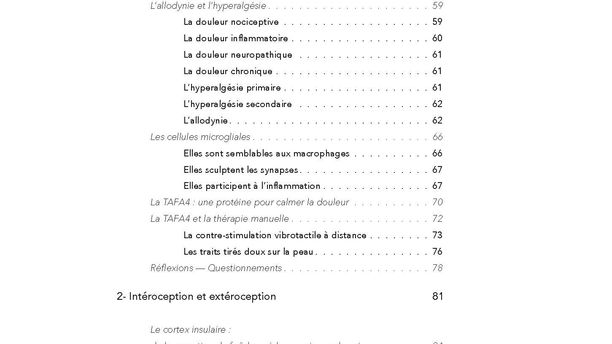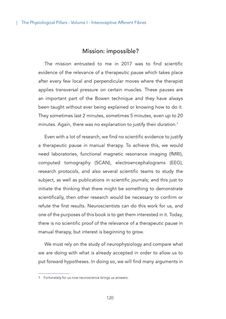top of page
Physiological Pillars
of Manual Therapy
Volume I :
Interoceptive Afferent Fibres
The vast majority of people who benefit from manual therapy, all methods included, attest to an improvement in their quality of life, and a significant or even sometimes complete relief of pain. In addition, we regularly see excellent general results such as a feeling of relaxation and of having a more flexible body; some people will even improve their sleep and speak of a deep sense of well-being, even happiness. Why? There must be ‘natural’ explanations.
If a person gets better, if their general condition has improved, it means that their body has regained its balance; and the return to balance requires a change in homoeostasis. If so, it means that something has happened in his physiology and that the parameters have changed. It’s inevitable. But what exactly happened and how did it happen?
The study of small-diameter sensory fibres which innervate all the tissues of the body and are sensitive to all changes in the mechanical, thermal, or chemical conditions of the tissues, sheds light on a part of manual therapy that has remained in the shadows until today. These interoceptive fibres are the main subject of volume I of the series Physiological Pillars of Manual Therapy.
bottom of page


















